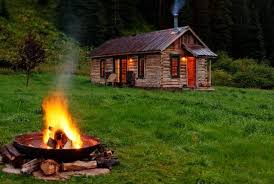Local Zoning Law




Know the Rules Before You Build, Park, or Buy
Zoning laws aren’t universal — they’re local. What’s allowed in one county might be totally banned just a few miles away. That’s why understanding local zoning laws is one of the most important steps in planning your tiny living journey.
Whether you’re buying land, converting a van, or placing a tiny house on wheels (THOW), this guide will help you make sense of the rules — and avoid costly surprises.
Why They Matter for Tiny Homes
Tiny homes often don’t fit neatly into traditional categories — they might be treated like:
A mobile home (MH)
An Accessory Dwelling Unit (ADU)
A temporary structure
Or… not legally recognized at all
Some local codes require a permanent foundation. Others ban structures under 400 sq ft. That’s why your local zoning office should be one of your first calls — not your last.
What Are Local Zoning Laws?
Local zoning laws determine how land can be used in a specific area (usually at the city or county level). They regulate:
What types of homes are allowed
Minimum square footage and lot size
Whether mobile or alternative housing is permitted
Utility hookups, off-grid systems, and permits
Even if your tiny home is legal somewhere, local zoning will decide if it’s legal there.
Tips for Navigating Local Laws
Look for flexible zones: Like AG (Agricultural), RU (Rural Use), or MH (Mobile Home)
Avoid rigid ones: Like Commercial (C1–C3), Industrial (IND), or Open Space (OS)
Call before you buy: Always contact the county or city planning department
Ask for keywords: Look into terms like “ADU,” “conditional use,” or “variance”
Unincorporated areas: Often have fewer rules and more tiny-home-friendly zoning
Local ≠ Logical
Just because a zoning code sounds like it fits (e.g., “Rural Residential”) doesn’t mean it allows tiny homes. Local governments often have outdated codes that exclude anything unconventional — even if it makes perfect sense.
That’s why we created this resource: to help you ask the right questions, speak the language, and find a spot that works for you.
Need help calling your local office?
📄 Grab our Zoning Call Checklist (PDF) — with all the right questions to ask.
Learn the Language
When browsing listings on Zillow or speaking with planners, you’ll run into codes like R1, AG, A-1, etc.
Need help decoding them?
📘 Download: Tinyvers Zoning Code Table Guide (PDF)
This quick-reference guide breaks down zoning types and tells you which ones are most compatible with tiny homes.








